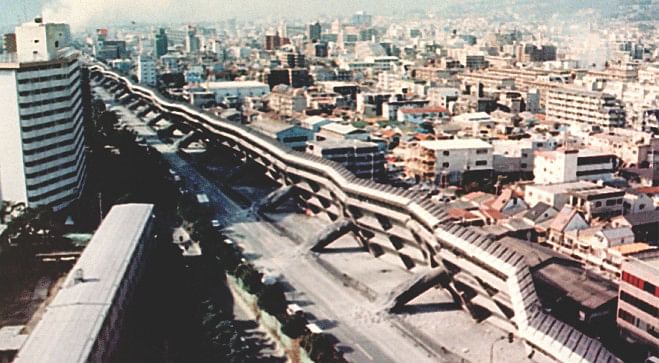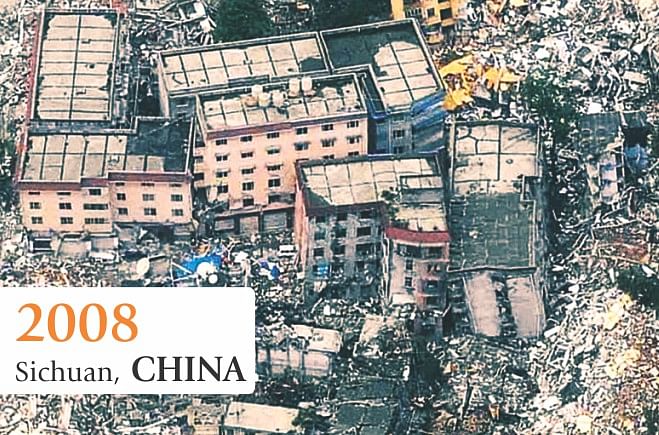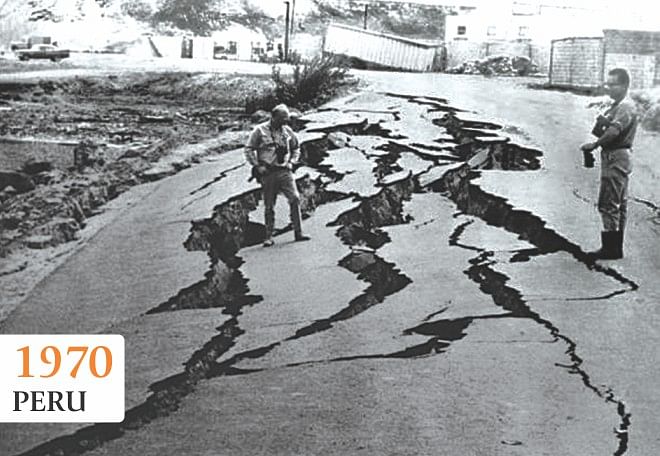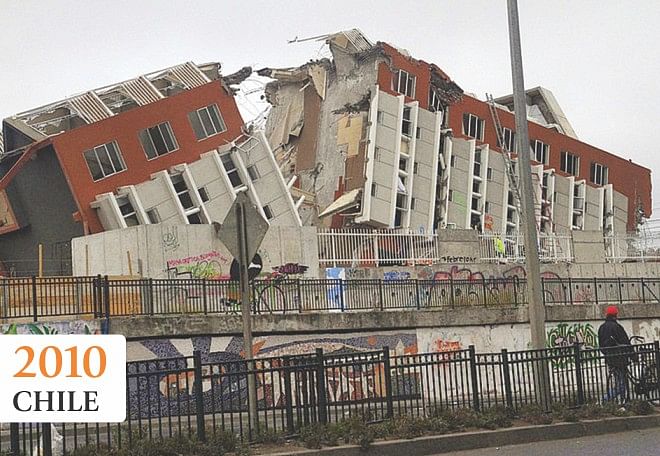The Earthshaker

Top 5 Deadliest Earthquakes
1. Shaanxi province,
China, Jan 23, 1556
Magnitude about 8.
Around 830,000 deaths.
2. Tangshan, China,
July 27, 1976
Magnitude 7.5. Estimated
655,000 deaths.
3. Aleppo, Syria,
Aug. 9, 1138
Magnitude not known.
About 230,000 deaths.
4. Sumatra, Indonesia,
Dec 26, 2004
Magnitude 9.1.
227,898 deaths.
5. Haiti, Jan 12, 2010
Magnitude 7.0. According
to official estimates,
222,570 people killed.
What if we say there might be a day in future when you can just drive to Brazil or the United States and you don't have to cross a sea?
What if we say a time might come when there will be no separate continents called Asia or the Americas and the world map will have a supercontinent named Amasia?
A cock-and-bull story? A madman's fantasy?

Call it whatever you feel like but the truth is, according to Canadian geologist Paul F Hoffman, the Americas will drift to merge with Asia and form a supercontinent -- Amasia.
What Hoffman, the first scientist to extrapolate the continents' motion, forecast in 1992 is only a matter of time to happen, given that the earth's surface is divided into continental plates.
And there will be thousands of quakes arising from these relocations and collisions of continental plates. And that's how earthquakes are born.

There had been thousands of quakes occurring in the same process through which Asia was said to have separated from Africa. Geological studies suggest the Indian continental plate, home to Bangladesh, had bordered with Africa's about 550 million years ago.
We are merely able to detect a fifth of an estimated 5,00,000 earthquakes happening round the year, the question of preventing the natural phenomenon is far-fetched.

What scientists can best do is to make a prediction of numerous impending earthquakes posing threat to life and property, especially in the countries having populations as large as in Bangladesh and China.
Although data on quakes in Bangladesh is limited, scientists can see the chance of a large scale earthquake occurring in Bangladesh as very high.
Since 1900, around a hundred below-4-magnitude quakes have hit Bangladesh -- over 65 of those occurred after 1960.
Scientists say before every 4.0-magnitude event, there will be 10 3.0-magnitude quakes and a hundred 2.0- magnitude ones. And quakes of 5.6 magnitudes or more occur once in a century.
After the 2001 Gujarat earthquake, felt in Bangladesh too, an article in Science magazine predicted that 70 percent of the Himalayas will experience an extremely powerful earthquake at any time.
In a UN report, Dhaka and Tehran have been singled out as the cities at highest earthquake disaster risk in terms of loss of life and property.

So the question is: how long do we have before the next large earthquake, keeping in mind that a quake killed more than 8,00,000 people in China's Shaanxi province in 1556.
The last 8.1-magnitude quake hit Bangladesh 64 years ago in 1950. Originating in Assam, scientists considered it one of the worst 20th century earthquakes, though no casualty was reported.
Its preceding one came in 1897, known as The Great Assam Earthquake, which had shaken an area of over 2,50,000sqkm, stretching from Burma to New Delhi, thrice the size of Bangladesh.
It devastated buildings standing along 3,90,000sqkm of the epicentre. In Bangladesh, communication on the Dhaka-Mymensingh road remained snapped for a fortnight as over a dozen of 50 buildings in Dhaka collapsed.
The Assam quake came 135 years after a permanent submergence of 155.40km land near Chittagong by a quake in 1762. It killed 500 people in Dhaka.
A river had dried up and two volcanoes were said to have opened in Sitakunda from the same quake, which caused many wetlands to overflow.
The quake in the previous century came in 1642, shaking buildings violently in Sylhet.
The first recorded earthquake had hit Bangladesh in 1548, opening up the earth in many places in Sylhet and throwing up water and mud of sulphurous smell.
A study conducted by Prof Mehedi Ahmed Ansari of Bangladesh University of Engineering and Technology has made a forecast of possible damage in Bangladesh.
“An estimated 2,70,604 buildings will be damaged in Dhaka, 2,38,164 of those destroyed beyond repair.”
Well, we cannot stop a quake. But we can learn about the steps we should take when a quake hits. We should not forget that over 13 million people live in Dhaka alone.

 For all latest news, follow The Daily Star's Google News channel.
For all latest news, follow The Daily Star's Google News channel. 



Comments